This article has been reviewed according to Science X's editorial process and policies. Editors have highlighted the following attributes while ensuring the content's credibility:
fact-checked
peer-reviewed publication
trusted source
proofread
Butterfly species' big brains adapted to give them a survival edge, study finds
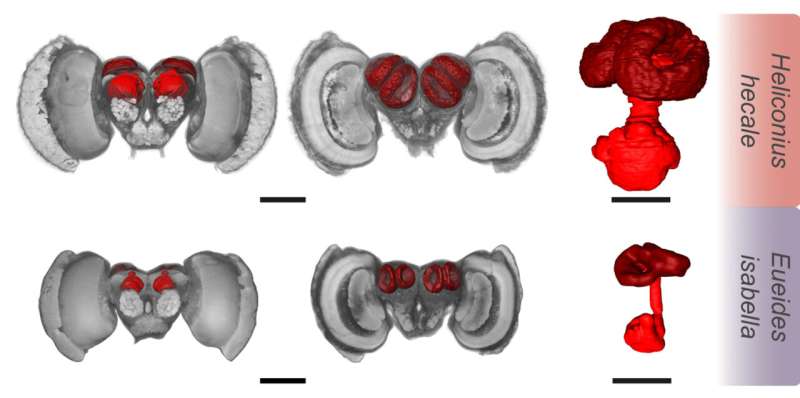
Heliconius butterflies' brains grew as they adopted a novel foraging behavior, scientists at the University of Bristol have found.
A region of their brain, known as the mushroom body due to its shape, are two to four times larger than those of their close relatives.
The findings, published July 7 in Nature Communications, suggest that the structure and function of the nervous system are closely linked to an organism's ecological niche and behavior.
Dr. Stephen Montgomery of Bristol's School of Biological Sciences explained, "Heliconius are the only butterflies known to collect and digest pollen, which gives them an adult source of protein, when most other butterflies exclusively obtain protein as caterpillars.
"This shift in diet allows Heliconius to live much longer lives, but they seemingly only collect pollen from specific plant species that occur at low densities.
"Learning the location of these plants is therefore a critical behavior for them, but to do so they must presumably invest more in the neural structures and cells that support spatial memory."
The team focused on the relationship between mushroom body expansion, sensory specialization and the evolutionary innovation of pollen feeding.
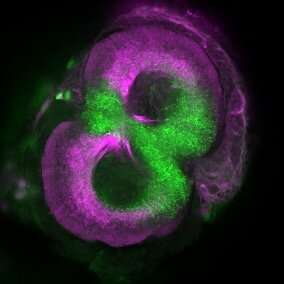
The study involved a unique synthesis of comparative data on large-scale brain structure, cellular composition and connectivity in the brain, and studies of behavior across species.
They built 3D models of the brain in 30 pollen-feeding species of Heliconius, and 11 species from closely related genera, collected from across Central and South America.
The volume of different brain areas was measured and mapped over phylogenetic (family) trees to estimate where major evolutionary changes in brain composition occurred.
They then investigated changes in neural circuitry by quantifying in the number of neurons in the mushroom bodies and the density of their connections, as well as sensory specialization by tracing neural inputs from brain areas that process visual information and smell before sending it to the central brain.
Finally, in partnership with the Smithsonian Tropical Research Institute in Panama, they conducted behavioral experiments in key species to assess whether the observed expansion of the mushroom body correlated with improved visual learning and memory.
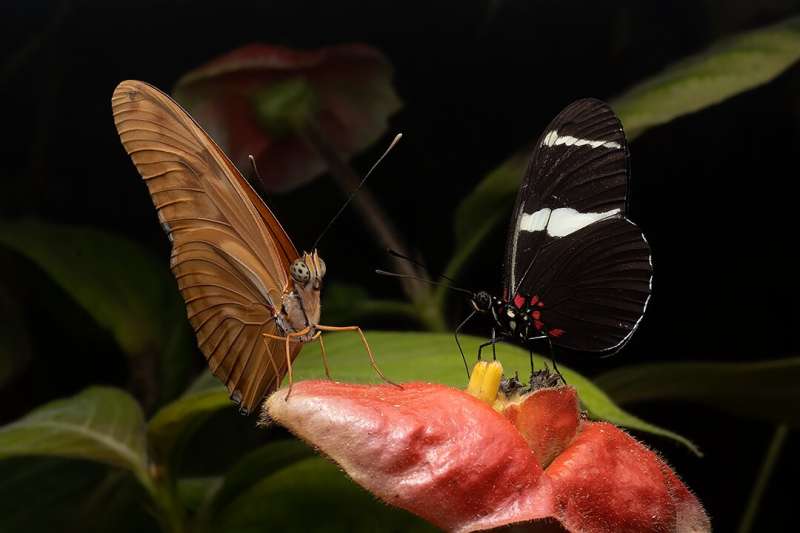
One striking result is the remarkable range of variation in mushroom body size observed among these closely-related species within a relatively short evolutionary timeframe. Across the whole dataset mushroom body size varies by 25-fold.
This provides a compelling example of how specific brain structures can vary independently over evolutionary time, known as mosaic evolution, when under strong selective constraints for behavioral adaptation.
Dr. Montgomery added, "We identified that changes in mushroom body size are due to an increased number of
'Kenyon cells,' the neurons that form the majority of the mushroom body and whose interactions are thought to be the basis of memory storage, as well as increased inputs from the visual system.
"This expansion and visual specialization of the mushroom bodies were accompanied by enhanced visual learning and memory abilities. Through this synthesis of data types, we provide a clear example of a novel foraging behavior coinciding with adaptations in the brain and associated cognitive shifts."
Co-lead author, Bristol's Dr. Antoine Couto, said, ""The study reveals how brain structure of Heliconius butterflies, specifically the mushroom bodies, has undergone remarkable changes that are tightly linked to their specialized foraging behaviors.
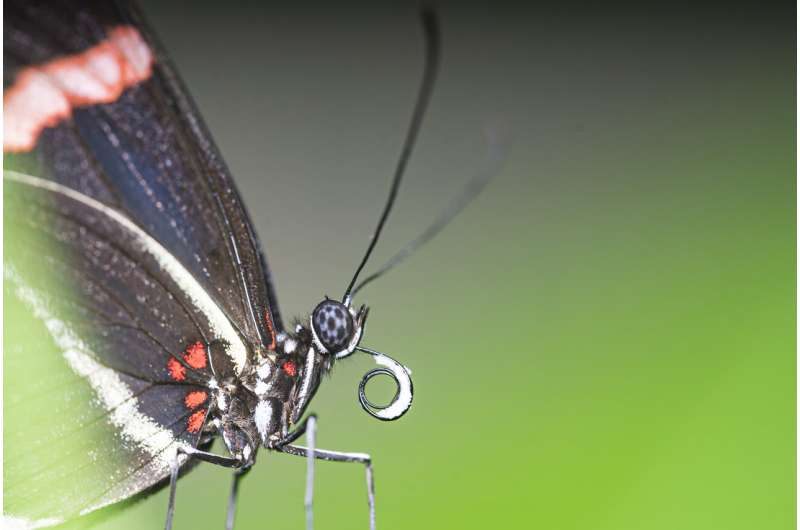
"These butterflies have evolved larger mushroom bodies with enhanced visual processing abilities, allowing them to discriminate complex visual patterns and retain visual memories over extended periods. These findings highlight the fascinating connection between brain evolution and behavioral adaptations in the natural world."
Dr. Fletcher Young, also co-lead author, added, "This study provides a rare combination of neurobiological and behavioral data across closely related species, revealing a clear example of marked evolutionary changes in the brain over a relatively short time scale coinciding with improved visual learning and memory abilities. Identifying such relationships between brain adaptations and behavioral shifts are crucial to our understanding of cognitive evolution."
Dr. Montgomery concluded, "We provide evidence that brain structure can vary in striking ways between even closely related species that live in the same habitats.
"In this example, the innovation of one suite of behaviors has led to a dramatic expansion of critical learning and memory centers in the brain, and we show these neural changes co-occur with substantial enhancements in cognitive ability.
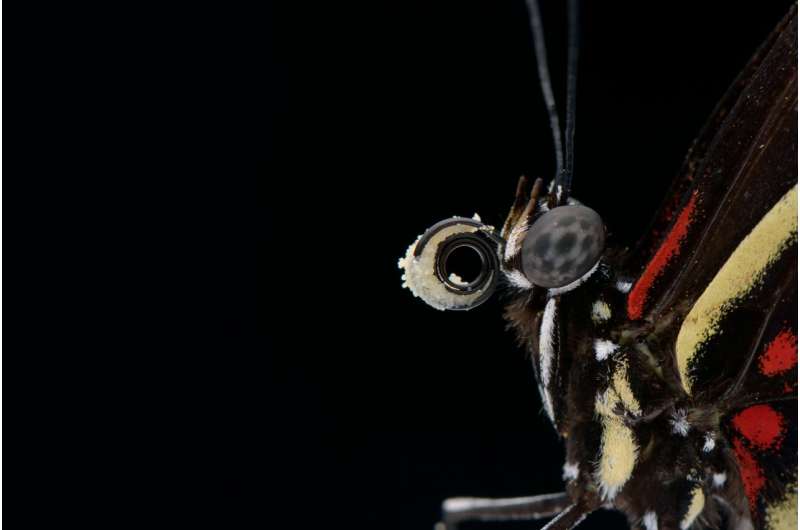
"We hypothesize that these behavioral differences reflect either a direct response to selection on foraging behavior, and the information the butterflies are extracting for the environment around them to guide their behavior."
Understanding the relationship between brain anatomy, sensory processing, and foraging behavior in Heliconius butterflies could also provide insights into the evolution of learning and memory mechanisms in not only insects, but other animals as the function and circuitry of mushroom bodies share some similarities with vertebrate brains. Hence these butterflies provide an excellent system in which to explore the neural basis of learning and memory with widespread relevance.
More information: Antoine Couto et al, Rapid expansion and visual specialisation of learning and memory centres in the brains of Heliconiini butterflies, Nature Communications (2023). DOI: 10.1038/s41467-023-39618-8
Journal information: Nature Communications
Provided by University of Bristol




















